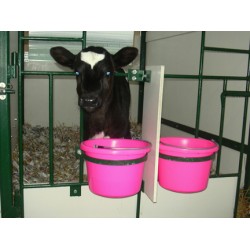Gut worms (parasitic gastroenteritis)
Gut worms are usually a problem of growing cattle but can also sometimes affect older cows and they can be a problem for both beef and dairy herds.
They cause a problem when youngstock such as heifers, graze pasture which is used yearly for the same purpose. Infection can occur due to grazing pasture which has become infected during grazing the previous season. Eggs are then passed out in the faeces which in turn can infect next year’s stock.
Treatment involves administering an anthelmintic. The type of infection will determine the type of product needed and Graham Shepherd, our vet, will be able to advise you which to choose as well as a strategy for prevention.
Lungworm
Lungworm is an infection of the lower respiratory tract caused by a nematode worms. It can cause problems for both beef and dairy cows and infection spreads when eggs containing larvae are passed out of infected cows in the dung.
These larvae then mature into the infective stage on the pasture where they can infect other cattle. Peculiarly to this worm, the larvae are spread long distances on the wind. Fungal spore bodies propel the larvae airborne!
Symptoms include:
●Increased resting breathing rate
●Increased coughing, especially after activity
●In dairy herds, a reduction in yield can also occur.
●Chronic ill-thrift and death can also occur.
Treatment involves administering a suitable anthelmintic however prevention is based on developing immunity and this can be achieved through vaccination also.
Health planning with your vet is important to help to control both gut worms and lungworm as different farms will require different strategies to ensure control is as effective as possible.
Control involves a combination of pasture management, if practical, and using wormer drugs (anthelmintics).
These drugs are available in injection and/or pour-on formulations.
Other drugs are available and may be more suitable, subject to veterinary advice.




